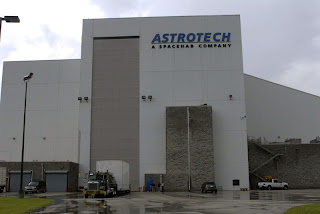NASA's Solar Dynamics Observatory Arrives at Kennedy Space Center

NASA's upcoming mission to study the sun in unprecedented detail and its effects on Earth, the Solar Dynamics Observatory (SDO), arrived at NASA's Kennedy Space Center, Fla. on July 9.
The spacecraft left NASA's Goddard Space Flight Center in Greenbelt, Md., on July 7, where it was built and tested.
After the final tests are completed, SDO will move to launch complex 41 at the Cape Canaveral Air Force Station. A United Launch Alliance Atlas V rocket will launch the solar-studying spacecraft into orbit.
SDO will take measurements and images of the sun in multiple wavelengths for at least five years during its primary science mission. The spacecraft will collect a staggering 1.5 terabytes of data daily, the equivalent of downloading a half million songs a day.
Space weather results from changes on the sun, called solar activity. Active regions on the sun can erupt suddenly and violently, usually in the form of a solar flare or coronal mass ejection (CME).
 Flares and CMEs can send millions of tons of solar material and charged particles streaming toward Earth on the solar wind. When the star stuff reaches Earth's atmosphere, it can damage orbiting satellites and wreak havoc on navigation systems and the power grid. Understanding space weather requires knowing the nature of changes that happen in the sun.
Flares and CMEs can send millions of tons of solar material and charged particles streaming toward Earth on the solar wind. When the star stuff reaches Earth's atmosphere, it can damage orbiting satellites and wreak havoc on navigation systems and the power grid. Understanding space weather requires knowing the nature of changes that happen in the sun.SDO is the first space weather research network mission in NASA's Living With a Star Program. The spacecraft's long-term measurements will give solar scientists in-depth information about changes in the sun’s magnetic field and insight into how those changes affect Earth.



 12:54 AM
12:54 AM
 sheldon
,
sheldon
,















0 Response to "NASA's Solar Dynamics Observatory Arrives at Kennedy Space Center"
Post a Comment